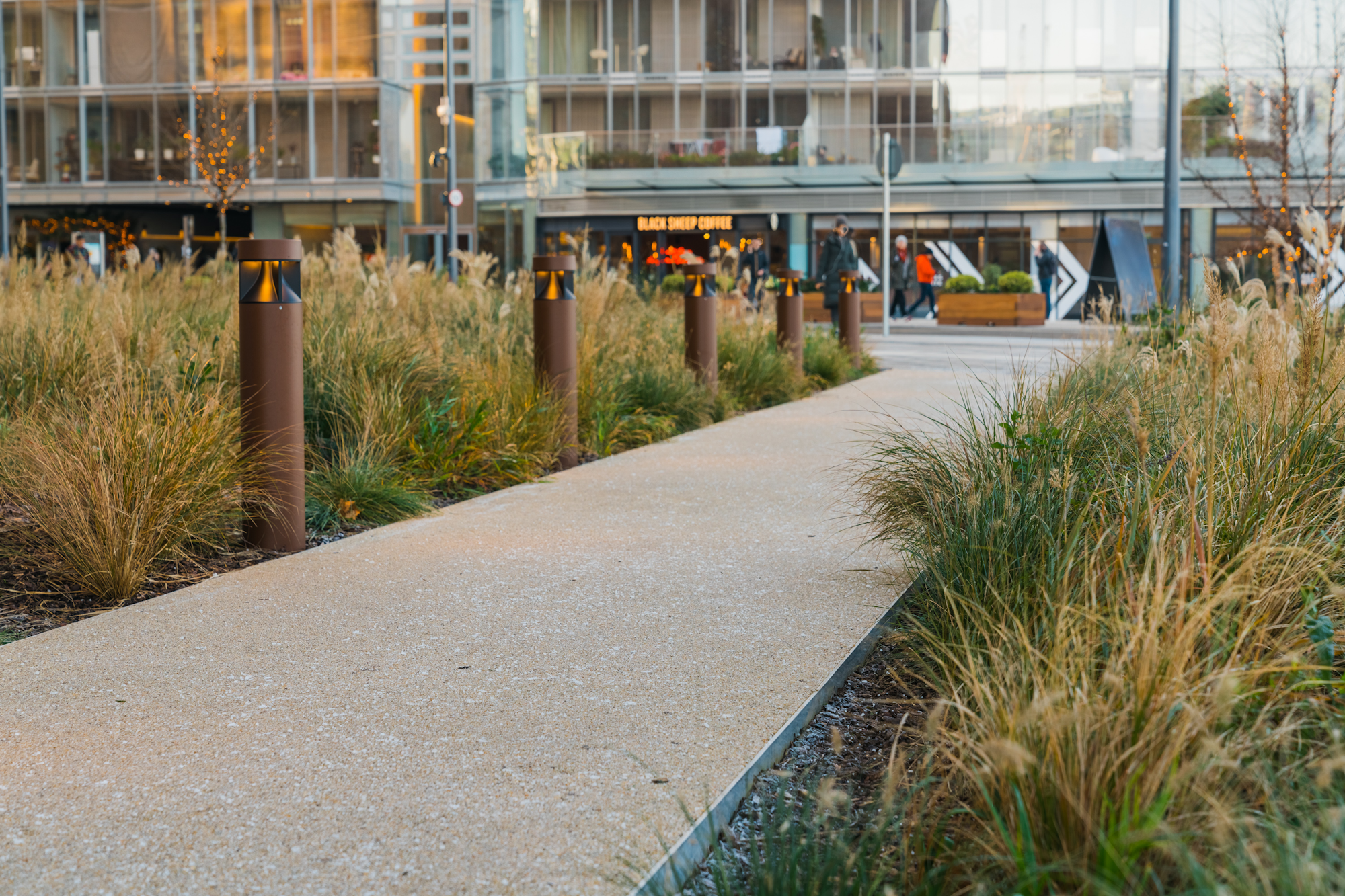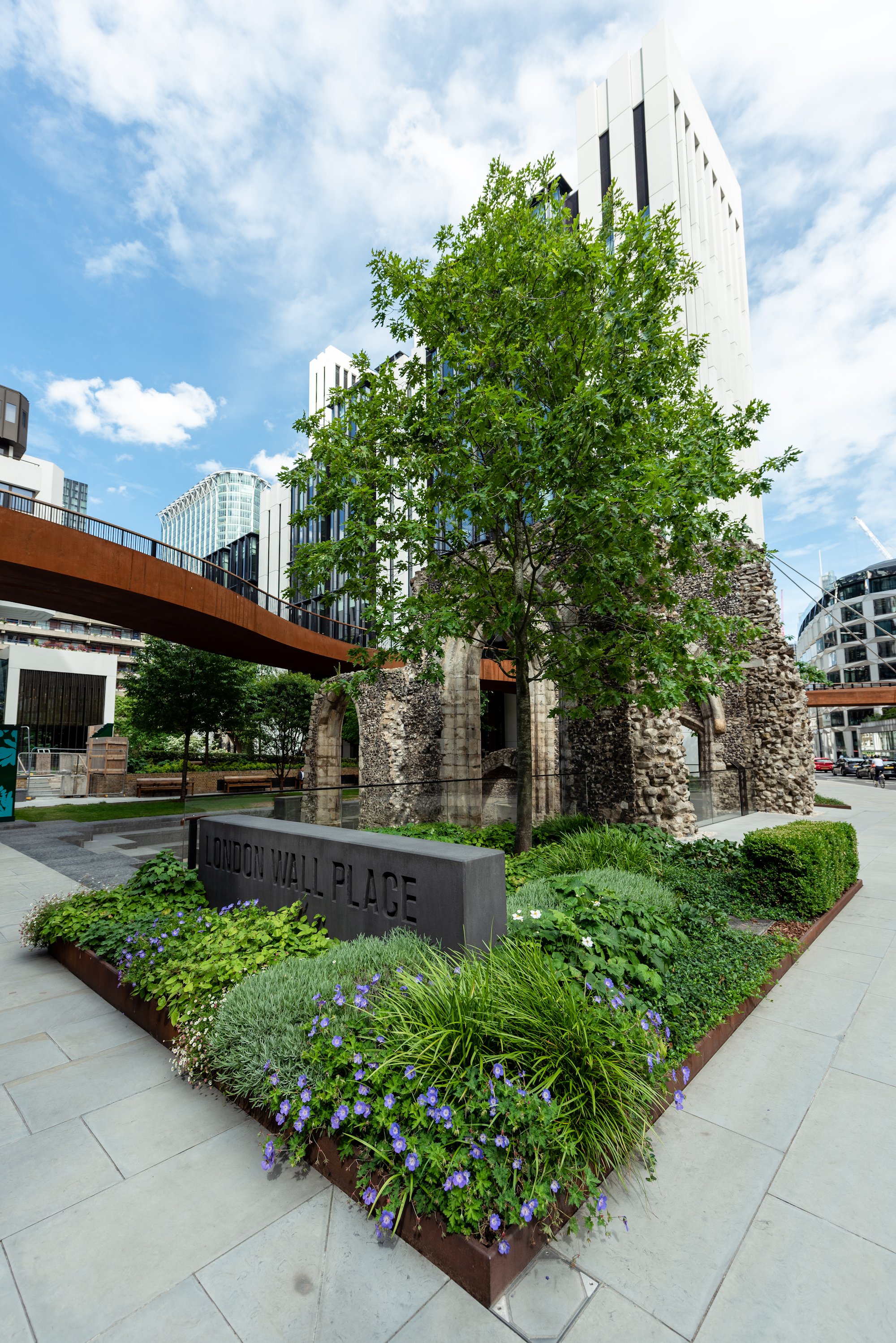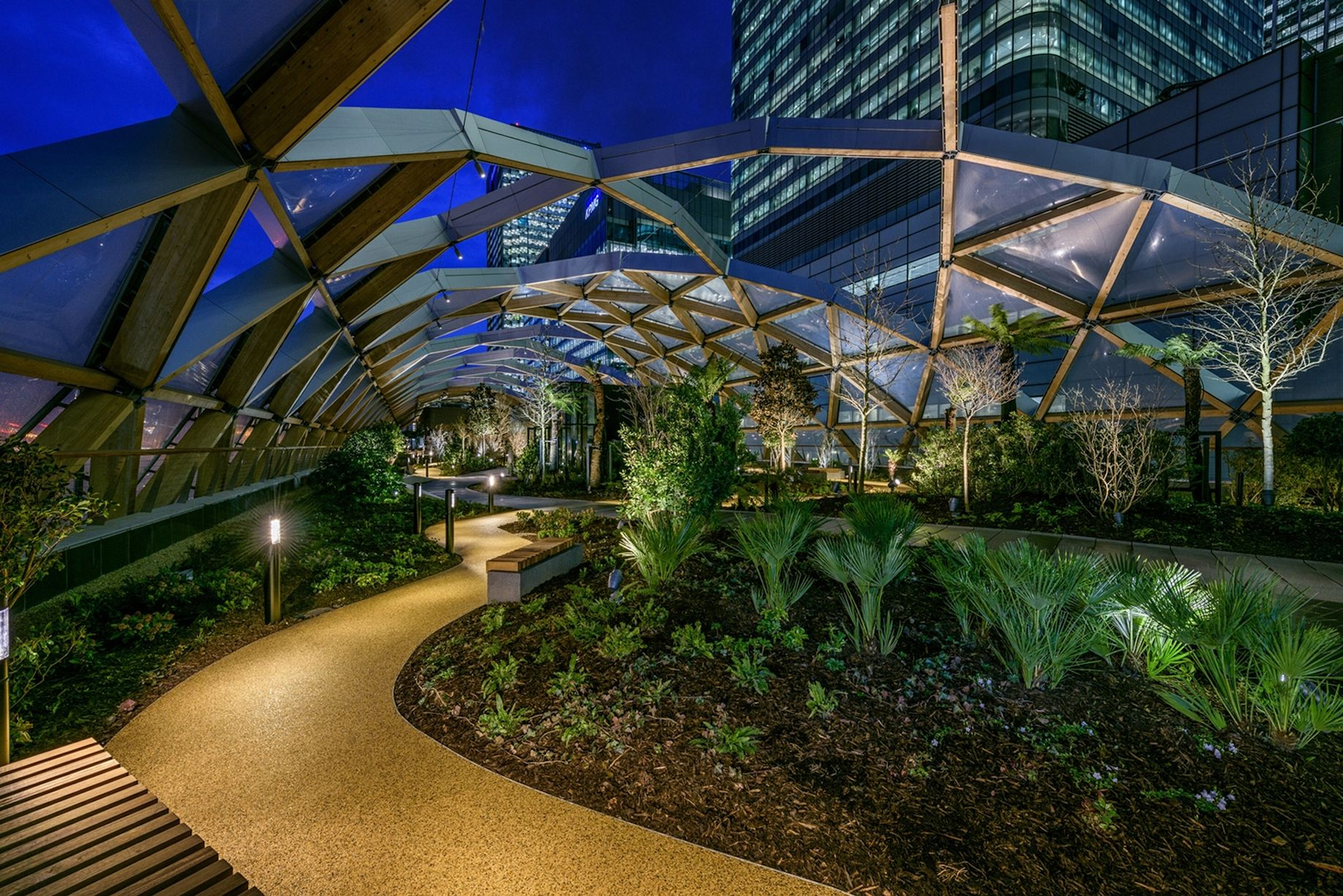
The rise of metal edging in urban gardens

As urban gardening gains momentum, gardeners and designers are seeking smart, stylish solutions that make the most of limited space. One trend reshaping these modern landscapes is metal edging.
Often used in larger, traditional gardens, edging now plays a crucial role in defining, organising and elevating outdoor spaces of all sizes. In urban environments, where every inch counts, metal edging offers both function and flair. But what exactly makes it so well-suited to city life and why is it showing up more and more in urban gardens?
In this blog, we will explore how landscape edging has evolved from its traditional roots to become a contemporary essential. We will take a closer look at how metal edging is being used in urban settings, its design versatility and why it is quickly becoming a go-to feature for city gardeners and landscapers.
Why landscape edging matters
Traditionally, landscape edging has been used to define and separate different areas within a garden. Marking clear boundaries between lawns, flower beds, pathways and borders.
Here are some key reasons why lawn edging matters in any setting:
- Defining boundaries: Edging establishes clear boundaries between different garden zones.
- Aesthetic enhancement: It provides a clean, crisp look. This elevates the overall visual appeal of the garden.
- Protecting plants: Landscape edging can shield plants from foot traffic, lawnmowers and other potential hazards.
- Simplifying maintenance: By defining borders, edging streamlines tasks like mowing, weeding and mulching.
- Reducing soil erosion: Edging can help prevent soil from washing away.
- Preventing weeds: Edging acts as a barrier, making it easier to control weeds and prevents them from spreading into other areas.
Whether used in a sprawling countryside garden or a compact city courtyard, landscape edging plays a vital role in creating well-organised, beautiful and low-maintenance outdoor spaces.

Landscape edging: A look at traditional gardens
When you think of landscaping, you may picture large country gardens with sweeping lawns, carefully arranged flowerbeds and impressive walkways. In these expansive spaces, landscape edging has traditionally played a crucial role in bringing structure and definition to the design.
Materials such as brick, natural stone and wood were commonly chosen to complement the garden’s overall aesthetic, blending function with form. These traditional gardens often embraced symmetry and balance, and edging helped reinforce these design principles.
While the scale of today’s gardens, especially in urban settings, may be smaller, the need for structure, organisation and aesthetic clarity remains just as important. That is where modern edging solutions, like metal, are gaining popularity.
The shift to urban gardening: A new design challenge
Whether it is in a private urban garden, a public space, play area, roof garden, driveway or footpath, metal edging is playing an increasingly significant role in both the design and functionality of these modern landscapes.
As cities become more densely built and green space becomes more precious, the need for clean, organised and low-maintenance solutions is becoming more important.
Urban gardening often involves working with unconventional or compact spaces, which means every design choice needs to be efficient and purposeful. Metal edging helps define areas clearly, manage plant growth, contain materials and provides a polished look that suits modern architectural surroundings.

Metal edging: A stylish and practical solution for urban spaces
Metal edging has emerged as a standout solution for landscaping. Valued for its durability, clean aesthetic and versatility across a range of applications.
Unlike traditional materials such as wood or stone, metal edging offers a sleek, minimal profile that works especially well in contemporary urban settings. It can be used to create sharp, defined lines or smooth, flowing curves. This makes it suitable for both modern geometric designs and more organic, natural layouts.
From a practical perspective, metal edging is highly durable and weather resistant. It holds its shape over time, resists corrosion and withstands temperature fluctuations better than wood or plastic alternatives. This makes it ideal for high-traffic areas and exposed environments like rooftops or open courtyards.
Available in various finishes, such a steel or aluminium, metal edging can also complement a wide range of surfaces and materials, from concrete paving to planting beds. It is both a structural and a visual asset, helping to organise space while contributing to a polished, professional look.
Creative ways to use metal garden edging in the city
Urban spaces come in all shapes and sizes, making it a huge potential for creative landscaping. Metal edging offers incredible flexibility, making it an ideal material for adding both structure and style to city gardens and public spaces.
Here are a few inspiring ways metal edging can be used in urban environments:
1. Framing pathways
Whether it is a gravel trail through a park or a narrow footpath in a rooftop garden, metal edging keeps materials neatly contained and prevents migration over time.
A great example of this was our project at Battersea Power Station, where metal edging was used to frame public walkways and green areas. It contributed to a sharp, modern finish that complements the surrounding industrial architecture.
2. Shaping curves and contours
Flexible metal edging can be bent into sweeping curves or custom shapes. This is perfect for softening hard architectural lines or creating a more organic layout in tight spaces.
At Crossrail Station, Canary Wharf, metal edging was used to achieve flowing, contemporary shapes that guide visitors through landscaped public areas. This helped soften the overall look and enhances the experience for those walking through.

3. Defining garden beds
The most traditional use, but by no means one to overlook, metal edging provides a crisp border that keeps soil and mulch in place while separating planting areas from paths, lawns or paved surfaces.
4. Outlining seating or play areas
In public or shared spaces, metal edging helps visually and physically separate different functions, such as seating zones or children’s play areas.
5. Adding a modern design element
Beyond its utility, metal edging adds a sleek, industrial or contemporary edge to any design. It pairs well with urban materials like concrete, glass and steel, creating visual cohesion in modern cityscapes.
This is showcased beautifully in our Project Light, Canada Water development, where metal edging helped create a polished, modern landscape that blends seamlessly with the surrounding architecture.

Kinley’s landscape edging: The growing popularity of metal edging in cities
Metal edging, particularly steel and aluminium, is becoming to a go-to solution in urban landscaping. Its durability, sleek appearance and design flexibility make it ideal for the demands of city environments, where space is limited and design impact matters.
This trend is driven by a desire for modern, low-maintenance designs and the ability to create clean, defined boundaries in both residential and commercial spaces.
At Kinley, we have been at the forefront of this trend, providing high-quality metal edging solutions that are trusted by architects, designers and developers.
As the demand for thoughtful, resilient and aesthetically sharp design grows in our cities, Kinley’s metal landscape edging continues to offer the ideal solution for long-lasting, contemporary outdoor environments.
Explore our full range of edging solutions or contact our experts today to get started on your project.